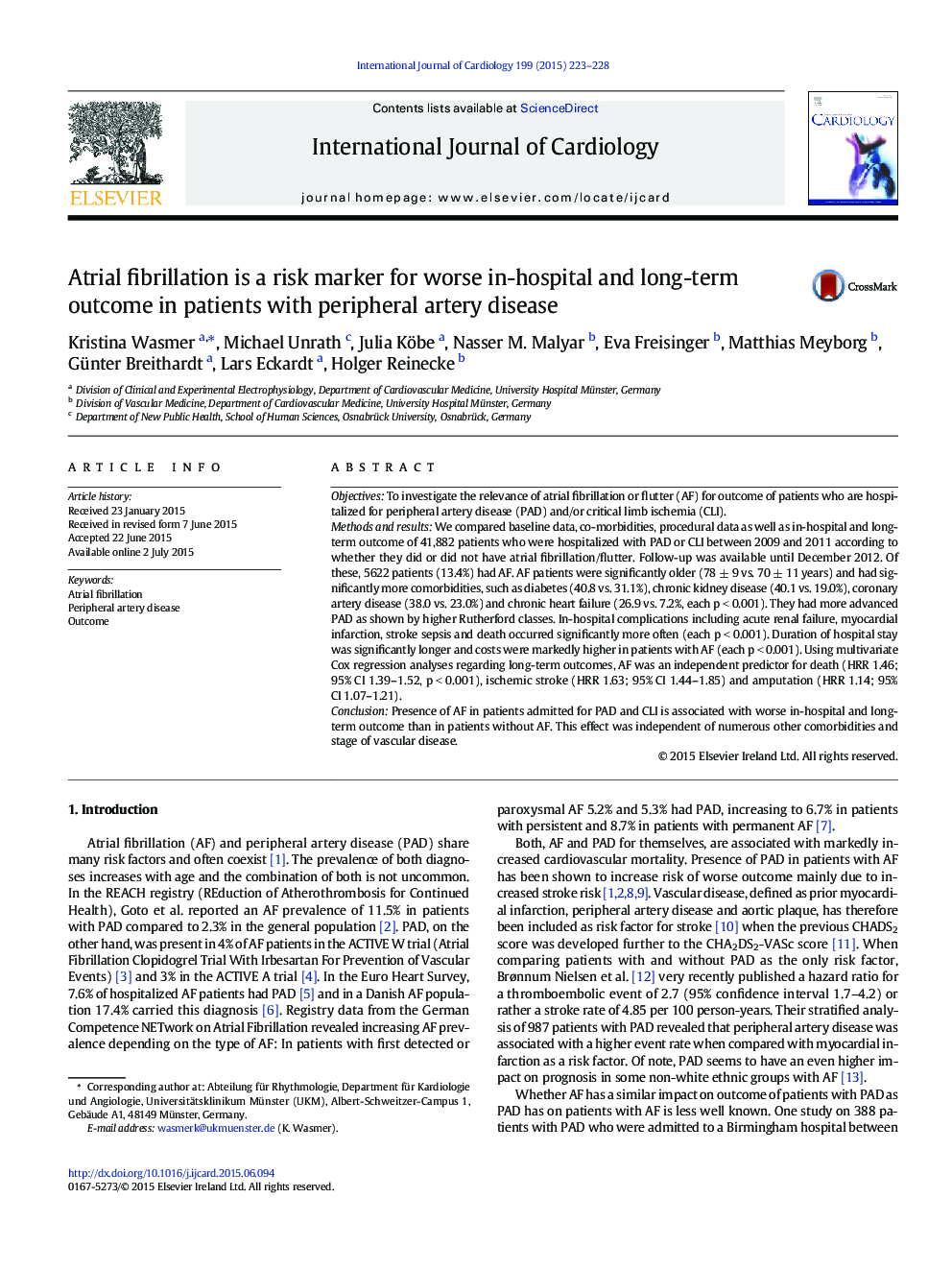| Article ID | Journal | Published Year | Pages | File Type |
|---|---|---|---|---|
| 5965874 | International Journal of Cardiology | 2015 | 6 Pages |
ObjectivesTo investigate the relevance of atrial fibrillation or flutter (AF) for outcome of patients who are hospitalized for peripheral artery disease (PAD) and/or critical limb ischemia (CLI).Methods and resultsWe compared baseline data, co-morbidities, procedural data as well as in-hospital and long-term outcome of 41,882 patients who were hospitalized with PAD or CLI between 2009 and 2011 according to whether they did or did not have atrial fibrillation/flutter. Follow-up was available until December 2012. Of these, 5622 patients (13.4%) had AF. AF patients were significantly older (78 ± 9 vs. 70 ± 11 years) and had significantly more comorbidities, such as diabetes (40.8 vs. 31.1%), chronic kidney disease (40.1 vs. 19.0%), coronary artery disease (38.0 vs. 23.0%) and chronic heart failure (26.9 vs. 7.2%, each p < 0.001). They had more advanced PAD as shown by higher Rutherford classes. In-hospital complications including acute renal failure, myocardial infarction, stroke sepsis and death occurred significantly more often (each p < 0.001). Duration of hospital stay was significantly longer and costs were markedly higher in patients with AF (each p < 0.001). Using multivariate Cox regression analyses regarding long-term outcomes, AF was an independent predictor for death (HRR 1.46; 95% CI 1.39-1.52, p < 0.001), ischemic stroke (HRR 1.63; 95% CI 1.44-1.85) and amputation (HRR 1.14; 95% CI 1.07-1.21).ConclusionPresence of AF in patients admitted for PAD and CLI is associated with worse in-hospital and long-term outcome than in patients without AF. This effect was independent of numerous other comorbidities and stage of vascular disease.
